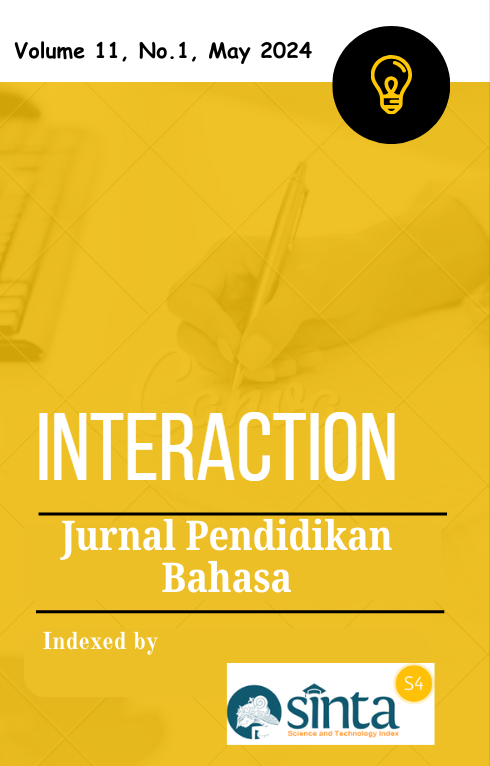Boosting Listening Skills in Low English Proficiency Learners: A Study on Podcast-Based Audio Scripting Method
Abstract
Listening, the most commonly utilized language skill, is paramount in everyday communication and educational settings. Recognizing the significance of listening comprehension and the challenges associated with teaching it, researchers have explored innovative methods such as podcasts and audio scripting to enhance listening skills. This study examines the efficacy of employing podcasts through the audio scripting method in improving students' listening abilities. The research adopts a quasi-experimental design with an equivalent control group to investigate the impact of this method on listening learning. The experimental group received instruction through podcasts and audio scripting, while the control group followed traditional listening exercises. Pre-tests and post-tests were administered to both groups to measure listening proficiency. The findings indicate a positive correlation between the audio scripting method and enhanced listening skills, with the experimental group showing significant improvement compared to the control group. These results suggest that audio scripting is an effective pedagogical approach for enhancing listening comprehension. Consequently, incorporating audio scripting into the curriculum offers a promising avenue for bolstering students' listening proficiency, which is crucial for their academic success and professional development in healthcare. Further research is recommended to explore this method's long-term effects and potential applications across different educational contexts.
Downloads
References
Agustin, R. W., & Ayu, M. (2021). The Impact of Using Instagram for Increasing Vocabulary and Listening Skill. In Journal of English Language Teaching and Learning (JELTL) (Vol. 2, Issue 1). http://jim.teknokrat.ac.id/index.php/english-language-teaching/index
Alfi Rahmatia, L., & Widiastuty, H. (2018). Students’ perceptions towards the use of Podcast in listening class. http://e-proceedings.iain-palangkaraya.ac.id/index.php/inacelt
americanenglishstategov. (n.d.). 2 0 2 2 Utilizing Podcasts in Virtual EFL Instruction.
AT, J., Latifa, A., & Amaluddin, A. (2023). Optimizing YouTube Videos Learning Media to Enrich Student’s Vocabulary at Seventh Grade Students. Edumaspul: Jurnal Pendidikan, 7(2), 5342-5346. https://doi.org/10.33487/edumaspul.v7i2.6555
Aufderheide, P., Lieberman, D., Alkhallouf, A., & Majiri Ugboma, J. (2020). Podcasting as Public Media: The Future of U.S. News, Public Affairs, and Educational Podcasts. In International Journal of Communication (Vol. 14). http://ijoc.org.
Barjesteh, H., & Ghaseminia, M. (2023). EFFECTS OF PRE-LISTENING TASK TYPES ON THE DEVELOPMENT OF EFL LEARNERS’ LISTENING COMPREHENSION ABILITY. International Journal of Listening, 37(2), 156–170. https://doi.org/10.1080/10904018.2019.1654867
Dakhi, S. (2019). The Principles and the Teaching of English Vocabulary: A Review Tira Nur Fitria. Journal of English Teaching, 5(1). https://ssrn.com/abstract=3378646
Desdous, W., Naili, M. R., Boutas, K., & Ben, M. S. (n.d.). A Dissertation Submitted in Partial Fulfilment for the Requirement of a Master Degree in English Didactics Impact of Podcasts on Listening Skills: Case of Second Year Students of English and Teachers of Oral Expression at the Department of English.
Facer, K., & Selwyn, N. (2010). Social networking: Key messages from the research. In Rethinking learning for a digital age (pp. 53-64). Routledge.
Gregg, K. R. (1986). The input hypothesis: Issues and implications.
Ivone, F. M., & Renandya, W. A. (2019a). Extensive listening and viewing in ELT. Teflin Journal, 30(2), 237–256. https://doi.org/10.15639/teflinjournal.v30i2/237-256
Kormos, J. (n.d.). Speech Production and Second Language Acquisition.
Mayer, R. E. (2014). Incorporating motivation into multimedia learning. Learning and instruction, 29, 171-173.
Nisa, F. (2018). 34141048: Improving Students’ Listening Skills Through Podcasts of Eleventh Grade at SMK Tritech Informatika Medan in the Academic Year.
Nur, R. ., & Annisa, R. . (2021). Rosetta Stone CALL Software as A Vocabulary Teaching Media at Indonesian High Schools. International Journal of Linguistics, Literature and Translation, 4(2), 13–17. https://doi.org/10.32996/ijllt.2021.4.2.3
Nur, R. A., & Syarifuddin, R. (2018). Designing an Instructional Model of Youtube-Based Materials of Listening Comprehension at Umpar Indonesia. Asian EFL, 20(27).
Nur, R. A., Latifa, A., & Busman, A. L. (2019). Utilizing the Instagram videos to enhance the students’ language acquisition on writing composition. Asian EFL Journal Research Articles, 23(6.3), 107-128.
O’Bryan, A., & Hegelheimer, V. (2007). Integrating CALL into the classroom: The role of podcasting in an ESL listening strategies course. ReCALL, 19(2), 162–180. https://doi.org/10.1017/S0958344007000523
R Nur, 2015. (n.d.).
Robertson, P. (2018). The Asian EFL Journal. http://www.asian-efl-journal.com
S., Latifa, A., & Ammade, S. (2024). The Use of Kuki Chatbot Application to Improve English Achievement. International Journal of English Language Studies, 6(1), 15–46. https://doi.org/10.32996/ijels.2024.6.1.3
Schmidt, R. W. (1990). The role of consciousness in second language learning1. Applied linguistics, 11(2), 129-158.
Sreena, S., & Ilankumaran, M. (2018). Developing Productive Skills Through Receptive Skills-A Cognitive Approach. In International Journal of Engineering & Technology. www.sciencepubco.com/index.php/IJET
Syahabuddin, K., & Khaira Rizqa, dan. (2021a). IMPROVING STUDENTS’ LISTENING SKILL USING PODCASTS. In Journal of Digital Education, Communication, and Arts Article History (Vol. 4, Issue 1).
Tarmawan, I., P Salim, A. D., & Ulpah, A. P. (2021a). The Role of Podcasts as an Alternative Media for Learning and Distribution of Audio Based Content. In International Journal of Research and Applied Technology (Vol. 1, Issue 1).
Vandergrift, L., Chuen, C., Goh, M., & Adam, D. (n.d.). Teaching and Learning Second Language Listening: Metacognition in Action. In Th e CATESOL Journal (Vol. 27).




.png)



22.png)
